Underwater archeology - Papers from 2015 to 2021




Click on the
octopus to return to
the top of the page







Authors:
Stein M. Nornes, Martin Ludvigsen, Øyvind Ødegard, Asgeir
J. Sørensen.
This paper presents the results of an underwater
photogrammetric survey of an intact standing steel wreck
with high vertical profiles from the seabed at 60 meters
depth. The survey was conducted in Trondheim Harbour in
August 2014 using a Remotely Operated Vehicle (ROV)
equipped with a stereo camera rig.

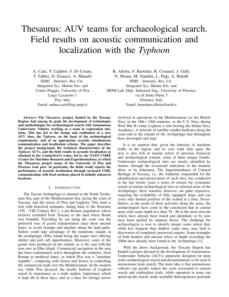

Authors:
John W. Foster & Denise Jaffke.
In June 2016 the authors participated in an expedition by
OpenROV to test their mini-Remotely Operated
Vehicle (ROV) in Lake Tahoe at extreme depth and to
capture images of the S.S. Tahoe in her resting
place at 350-475 feet beneath the surface. The project
was carried out by a multi-disciplinary team, including
an online community, using a vehicle modified for deeper
dive operations. The mini- ROV (or
drone) is emerging as a popular vehicle worldwide for
underwater exploration.



Author: Peter Holt Peter Holt
Peter Holt spent 20 years with Sonardyne International Ltd.
designing subsea navigation systems for the oil industry
and military. Between 2010 and 2016 Peter directed the
SHIPS Project, a wide ranging study of the maritime history
of Plymouth funded by the US research foundation
ProMare. Since 1989 Peter has worked on maritime
archaeology projects. He was a visiting research fellow at
Plymouth University from 2010 to 2016, supervising
numerous MSc Hydrography projects each year. Peter is a
Chartered Engineer, a Member of the Chartered Institute
for Archaeologists, a Member of the Hydrographic Society,
a NAS Senior Tutor, he is the NAS south-west regional co-
ordinator and is on the International Shipwreck Conference
organising committee.


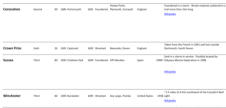

Book of Abstracts of ISBSA 14. International Symposium
on Boat and Ship Archaeology Baltic and beyond - Change
and continuity in shipbuilding 21–25 September 2015
Symposium organizer: National Maritime Museum in
Gdansk



Author: Ivor Mollema
The two ships, Bato (1806) and Brunswick (1805) wrecked
in Simons Bay, South Africa, provide an opportunity to
compare British and Dutch maritime technologies during
the Napoleonic Era (1792–1815). The former was a Dutch
74-gun ship of the line and the latter a British East
Indiaman. Their remains reveal pertinent information about
the maritime technologies available to each European
power.



This document relates a joint maritime archaeological
project between the Australian National Maritime
Museum, Sydney, Australia, and Pusat Penelitian Arkeologi
Nasional, Jakarta Selatan 12510, Republik Indonesia.



Published in 2015 by the United Nations Educational,
Scientific and Cultural Organization, 7, place de Fontenoy,
75352 Paris 07 SP, France
Authors:
Innes McCartney, Selçuk Kolay, Augusto Salgado, Jorge
Russo, Herni Legoherel, Akifumi Iwabuchi, Guido Demerre,
Gino Deceuninck, Cynrik De Decker, Nathalie De Hauwere,
Ine Demerre, Johan Devolder, Frank Janssens, Tomas
Termote, Patrick Tiersoone, Sven Van Haelst, Marnix
Pieters, John Gribble, Jonathan Sharfman, Robert
Anthony Yorke, Michel L’Hour, James Delgado, Ole Varmer,
Ulrike Guérin, Craig Forrest, Antony Firth, Mark Dunkley,
Andrew Viduka, Michel Huet, Dirk Timmermans, Pierre Yves-
Lepage, Garry Momber, Amanda Bowens, Franca
Cibecchini, Olivia Hulot, Ingeborg , Svennevig, and Will
Brouwers.



Authors:
Katy Bell, Andrea T. Hamel, Toby Gane, Mark Beattie
Edwards, Peta Knott, Paola Palma, Jessica Berry, Kevin
Stratford, Steve Brown, Robert Lenfert, A. Liddell, M.
Skelhorn, Terence Newman, Peter B. Campbell, Peter B.
Campbell, Derek M. Smith, Jeffrey G. Royal, Christopher T.
Begley, Petra Zdravkovic, Derek Irwin.
This volume came about as a result of a session run at
the (then) IfA conference in Glasgow in 2014 by the
Maritime Affairs Group. The focus of the conference was
‘research in practice’, in particular, the challenges that
are posed to heritage professionals regarding value,
quality, dissemination, and accessibility of the
archaeological resource. In maritime archaeology, this
can be a particular issue with the additional practical
considerations of allowing access to what is often
underwater or inaccessible.

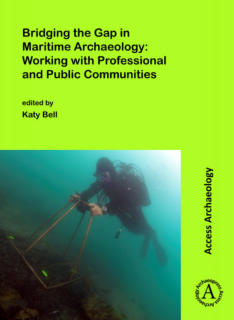

Author: Andrew Viduka
Most, if not all, Australian states have limited human and
financial resources to protect, document, or practically
manage UCH on a day-by-day basis. Recognizing these
constraints in Australia, early
UCH management activities focused on developing
community groups within each jurisdiction as one of a
series of public engagement mechanisms to protect UCH
sites. In many jurisdictions, successful site management and
protection are directly related to local community groups’
active engagement and knowledge. Recognizing that
facilitating safe public access is best practice in UCH
management, a focus of management activity should be on
fostering the development of community-based advocacy
groups who become knowledgable ‘archaeologists’
capable of supporting heritage management agencies in
their activities.

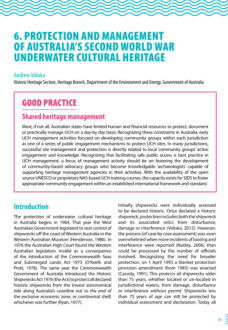

Authors:
Bill Jeffery, K.Y. Chan, L.H. Li, P.K. Wong, B. Jeffery, S.M.
Chow, W.C. Ho, S.M. Chan.
With contributions from: P. Harrison, S. Heaver, D. Riach
This book results from a project Recording and
Documenting the Underwater Heritage of Hong Kong. It
was implemented by a small group of Hong Kong residents
(the authors) interested in revealing underwater cultural
heritage sites and histories. It is the first time Hong Kong’s
underwater cultural heritage has been written up in a
manner that is aimed at informing the Hong Kong
community.

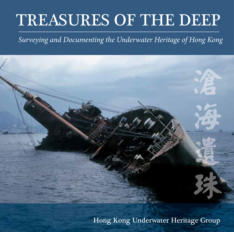

Authors:
Peter Veth, Vicki Richards, Cassandra Philippou, Jennifer
Rodrigues, Mark Staniforth, Amer Khan, Andrew Viduka,
Adele Zubrzycka, Peter Harvey, James Parkinson, Ian
MacLeod, Debra Shefi, Anthony Barham and Dudley
Creagh. Contributions by: Brad Duncan, Cosmos Coroneos,
Michael Nash and Kevin Edwards.
The Australian Historic Shipwreck Preservation Project
(AHSPP) has focussed on the reburial and in-situ
preservation of shipwrecks and colonial shipbuilding. In
2011 researchers identified a number of criteria that a
research site should meet in addressing these topics,
including
1.
the shipwreck must be identified as ‘at-risk’;
2.
the site should be logistically accessible;
3.
the site has been extensively researched, monitored,
and perhaps partially excavated previously; and
4.
the current managing agency must support the AHSPP
and have the capacity to carry out the long-term
monitoring of the site.



Authors: John McCarthy and Jonathan Benjamin
Project SAMPHIRE (the Scottish Atlantic Maritime Past:
Heritage, Investigation, Research, and Education Project)
was geographically focused on the west coast of the
Scottish mainland and was undertaken between 2013 and
2015, resulting in a large number of new archaeological
discoveries, including ship-wrecks, aircraft, and other
material of a much more varied nature than what is typically
found through large-scale hydrographic surveys.

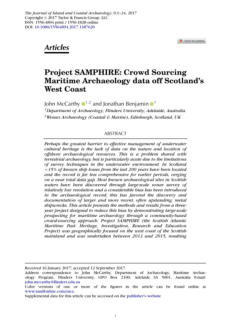

Author: Bill Jeffery
This chapter is primarily focused on the submerged
WWII sites in Chuuk Lagoon (formerly Truk Lagoon),
which represents the largest number of sites in Micronesia
(in addition to those in Palau).
Other significant sites in Micronesia including Pohnpei, Yap,
and Guam are addressed briefly.



Authors:
Michael L. Brennan, James P. Delgado, Larrie D. Ferreiro,
Josh Broussard, & Michael Arbuthnot.
The discovery of the sunken remains of the battleship USS
Nevada (BB-36) by Ocean Infinity and SEARCH Inc. in 2020
provided the means for documentation, site mapping, and
characterization of a deep-water shipwreck with an iconic
history that spanned half a century of profound change in
the world in response to two world wars, shifting
geopolitics and technological development that concluded
with the advent of the atomic age.

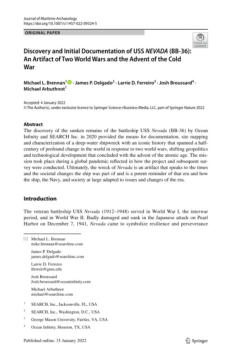

Authors:
Johannes Reich, Philipp Steiner , Ariane Ballmer, Lea
Emmenegger, Marco Hostettler, Corinne Staheli, Goce
Naumov, Bojan Taneski, Valentina Todoroska, Konrad
Schindler, & Albert Hafner.
This article presents a novel methodology for the
underwater documentation of pile fields in archaeological
lakeside settlement sites using Structure from Motion (SfM).
Mapping the piles of such sites is an indispensable basis for
the exploitation of the high-resolution absolute
chronological data gained through dendrochronology. In a
case study at the underwater site of Ploca, Micov Grad at
Lake Ohrid, North Macedonia, nine consecutive 10 m2
strips and a 6 m2 excavation section were uncovered, the
situation documented, and the woodpiles sampled.



Author: John Tomkinson
This paper is a historical study of the evolution of cannons
during the 15th century.
Some readers may be surprised with an article that does not
discuss diving. The reason is that cannons are often
elements that can be used to deduct the age of some
wrecks.



Authors:
Izabela Bodus-Olkowska, Grzegorz Zaniewicz, Piotr Malinski
This paper highlights the synergy between existing remote
sensing technologies and the management of underwater
cultural heritage with examples of ongoing research
projects, such as Malta's approach to considerations of
historical and natural conditions of site elements. Such an
approach allows for the scaling of sites based on several
parameters and provides instructive information for creating
management strategies.

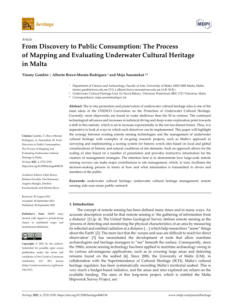

Authors:
Izabela Bodus-Olkowska, Grzegorz Zaniewicz, Piotr Malinski
In August 2020, the authors of this paper realized an
interdisciplinary survey of 12 wrecks located and inventoried
earlier as a part of a project Underwater ethnoarchaeology
of the Lower Oder. The survey was a part of the research
on the classification method of anthropogenic, ferrous,
underwater objects based on magnetic anomaly maps.
Data acquisition involved recording data with an
interferometric echosounder, side-scan sonar, and marine
magnetometer.

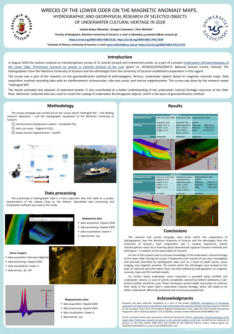

Authors: Kieran Hosty, J& ames Hunter.
In 2014, the Australian National Maritime Museum (ANMM)
received reports from recreational divers that the shipwreck
site of HMAS Perth was being systematically salvaged by
commercial divers. After extensive discussions with
Indonesian government departments and agencies the
ANMM led the first Australian/Indonesian remote sensing
survey of Perth in December 2016. This was followed by an
in-water survey in May 2017. These investigations revealed
Perth has been devastated by systematic, large-scale
unauthorized salvage.

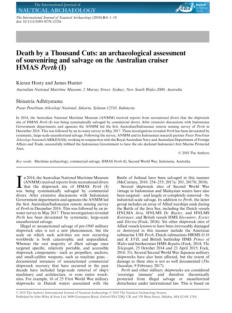

Author: Allen Donald Wilson
A fine wreck in shallow water” is how W. A. Cockrell
described the Soldier Key Wreck (8DA416, BISC-22)
during the first professional survey of the site in
September 1976. Since that time, three archaeology field
schools and numerous looters have visited the site.
Unfortunately, divers have displaced the ballast from atop
the hull, removed many portable artifacts, and left the
wreck exposed to storms and shipworms….



Authors: JMartin Gibbs & Brad Duncan
Most studies of maritime site formation processes have
concentrated upon the various natural and, to a lesser
extent, cultural processes physically impacting the remnants
of the vessel (the shipwreck) and closely associated artifacts
while ignoring wider influences that have resulted in the
current archaeological record. This paper explores how
cultural processes not only affect the transformation of a
ship into a shipwreck site but also how continuing human
interactions can produce other archaeological sites that are
equally important for understanding the archaeology of
shipwrecks.



Authors: Steven Anthony and James Smailes
The Maritime Archaeological and Historical Society (MAHS)
is organized for the purpose of enhancing public
awareness and fostering appreciation for the significance of
historic shipwrecks and other underwater cultural heritage.
Our mission is to preserve our maritime heritage, and our
members volunteer to participate in underwater
archaeology expeditions around the world.

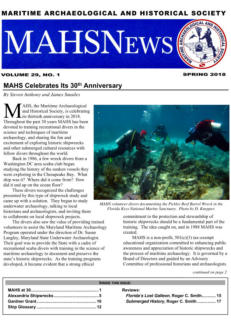

Authors: Sarah Madden
On March 20, 1980, a local fisherman discovered a wreck in
Østerby Harbor on the island of Læsø, Denmark. Along with
timbers from two separate shipwrecks, two cannons were
also lifted from the harbor.
Investigation showed that one set of timbers belonged to a
fishing ship from the 1930s. However, the other timbers
were far older, and there were no recollections in the
collective town memory of an older ship having sunk there.



Authors: Hunter Weatherly Whitehead
Two F8F Bearcat wreck sites are discussed here, including
the methods involved in aircraft investigation and the
historical documents referenced for their identification.
Utilizing photogrammetric modeling techniques, the author
tests the applicability of photogrammetry as an in situ site-
monitoring tool.



Author: William Joseph Wilson
Nautical archaeologists emphasize the study of formation
processes and understanding the natural environments
of the sites they are studying. Most notably, this approach
has been used to understand the spatial relationships
and presence or absence of artifacts (Muckelroy 1977).
Although very useful for the interpretation of wreck sites,
this approach leads to a focus on the end-product
attributes of site formation rather than the processes, thus
acting as mere descriptions of formation processes for
use as explanatory devices (Ward et al. 1999:561).



Authors: Sean A Kingsley
Under the banner of the UNESCO Convention on the
Protection of the Underwater Cultural Heritage, current
management embraces the in situ preservation of wrecks as
optimum practice.
This article addresses what the UNESCO protocol intends,
highlights inconsistencies and suggests the concept of in
situ preservation needs to evolve to maintain relevance.



Author: Nathan Richards
The remnants of deliberately discarded watercraft have
been a subject of maritime historical and archaeological
inquiry for some time. Studies of ships re-utilized as ancient
boat burials (such as the Snape Boat), votive offerings, or
transformed into foundations, and many types of alternate
structures and buildings are well-known in maritime
archaeological literature.



Authors:
Jean-Sébasien Guibert, Franck Bigot, Magali Lachèvre, Jean-
Jacques Maréchal, Marine Sadania, Noémie Tomadini,
Magali Veyrat
In 2015, an initial archaeological campaign tentatively
identified the Saintes Bay Wreck as the Anémone, a French
schooner built in 1823 in Bayonne. The Anémone was
used as a customs ship in Guadeloupe before it was lost in
Saintes Bay in September 1824 during a hurricane (Guibert
2013). The authors returned in July 2016 as part of the
French West Indies University research program. Our goal
was to gain a thorough understanding of the site in hope
of confirming the wreck’s identity.



Authors: Marijo Gauthier-Bérubé
For the past ten years, a group of international scholars has
been working on a multi-language glossary for early
modern Iberian ships, a preliminary version of which was
recently published on the Academia website. The project
was conducted under Dr. Filipe Castro's supervision of the J.
Richard Steffy Ship Reconstruction laboratory at Texas A&M
University originated from the Nautical Archaeology Digital
Library (NADL) Project 1. A multilingual glossary was a
central tool in the NADL that allowed the collection and
interpretation of archaeological data stored in different
formats.



Authors: IA Kirichenko, I B Starchenko, V Y Vishnevezkiy,
A I Markolia, I I Sizov, and T P Strochan
The shallow water environment is one of the most dynamic
elements, subject to rapid sedimentary flows and of
significant interest to human activities. This environment
pose severe challenges due to shallow water, strong waves,
strong currents, large tidal range, and fine gas, which
restrict sound penetration. To optimize the characteristics of
acoustic profiler with a parametric transmitting array in the
scope of underwater archeology and monitoring of
underwater engineering objects, theoretical studies of the
influence of real conditions on the work of parametric
hydro-acoustic systems and of the marine soils and bottom
sediments features are presented in this study.



Public access to underwater and maritime cultural heritage
has proven to have a very positive effect on the local
economy. This type of heritage is very attractive for the
cultural tourism sector in general and active and diving
tourism. The Nautical and Underwater Archeology Line of
the University of Cadiz, within the framework of the TIDE
Project and Herakles Project, have been working on the
enhancement of maritime and underwater heritage
through the application of new technologies. This paper
presents the advances in the project in the Strait of Gibraltar,
based on the first phase of scientific analysis and the
defnition of a common working methodology with resulted
in a toolkit for the development of tourism activities.

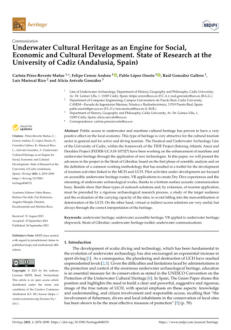

Authors: Shadrin N. V.
This essay gives brief preliminary overview of his
contribution in marine biology and underwater archeology
of the Black Sea,
study of nature and people of Abkhazia in the 19th century.



Authors: A E Goncharov, D M Mednikov, N M Karelin, I
R Nasyrov
Current progress in underwater archeology is based on a
rich arsenal of high-tech appliances, among which sonar
technology plays a key role; it enables scientists not only to
detect submerged archeological objects, but to examine
them in high definition without having to conduct diving
operations or use expensive underwater unmanned
vehicles.



Publisher: UNESCO
This model code of practice has been drafted by the
UNESCO UNITWIN Network for Underwater Archaeology,
following on from the Network’s annual meeting in 2016 at
UNESCO in Paris. The Network identified a lack of
consistent practices and a need for common language
related to scientific archaeological diving by its members as
a way to reduce barriers to international partnerships
working. This document is non-prescriptive, and its use is
voluntary. It does not supersede any national, local or
institutional policy related to scientific archaeological diving.



Authors:
Joanne Edney, Kay Dimmock, and William E. Boyd
Successful underwater heritage management requires a
sound understanding of visitor behavior. Primary visitors to
underwater heritage sites are divers whose behavior can
pose risks to the integrity of the site's cultural heritage and
tourism values. This study seeks to understand wreck diver in
-water behavior.



Authors:
I A Kirichenko, I B Starchenko, V Y Vishnevezkiy, A I Markolia,
I I Sizov, and T P Strochan
The results of theoretical studies of the influence of real
conditions on the work of parametric hydro-acoustic
systems and of the marine soils and bottom sediments
features are presented in this study to solve the problem of
optimizing the characteristics of acoustic profiler with a
parametric transmitting array in the scope of underwater
archeology and monitoring of underwater engineering
objects.

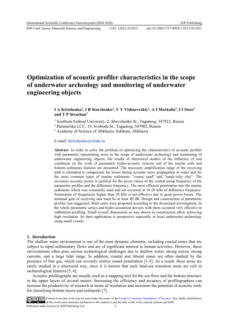

Author: Kim Kisner
This article defines the long and complex research
implemented to find the locations of two World War II
shipwrecks: The German raider Kormoran and the
Australian light cruiser HMAS Sydney.

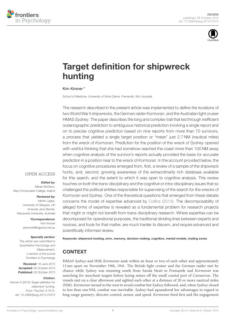

Publisher: Avon Protection
Rebreathers are increasingly used by sportive divers
involved in archeological campaigns. For this reason, it is
essential to provide guidelines allowing them to understand
this type of equipment. It is the case of this paper that gives
information on the fundamental properties that govern a
rebreather design:
1. The resistive work of breathing (WOB) within the
rebreather.
2. The hydrostatic WOB of the unit when submerged.
3. The absorbent duration.
4. The oxygen control dynamics.

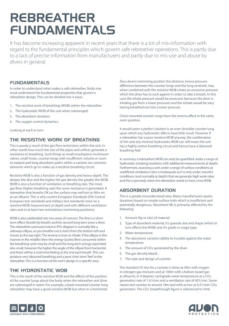

The Virginia Institute of Marine Science (VIMS) Scientific
Diving Program has supported the VIMS Dive Team with
training and equipment since 1983.
This manual is a modified version of the 2018 American
Academy of Underwater Science (AAUS) standards
(.https://www.aaus.org/AAUS)

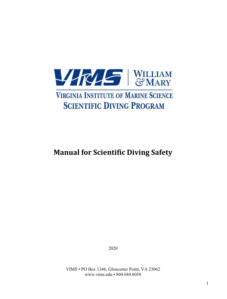

Author: Joanne Lynette Edney
The purpose of this research is to address gaps in the
literature the behaviour, motivations, and attitudes of wreck
divers, and to identify opportunities for better integration of
divers and management of underwater cultural heritage in
the Asia-Pacific region.

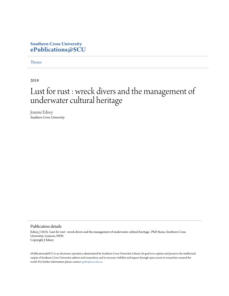

Authors: Hendra Kurnia Febriawan, Omar Moefti, Dwi
Haryanto, Taufan Wiguna
Shipwreck sites worldwide highlight the importance of
locating wrecks resulting from accidents. The shipwreck of
MV Bahuga Jaya in the Sunda Strait, Indonesia, serves as an
example of possible causes. Using a multibeam swath
survey, the authors can accurately map the wreck's location
by creating a detailed Digital Elevation Model (DEM) and
backscatter images. Analyzing the slope of the bathymetry
DEM and the texture of the backscatter imagery through
morphometric and texture analysis, along with machine
learning classification, enhances the detection and
monitoring of shipwrecks.



Author: Daniele Castrizio
The paper examines the coins discovered in the Antikythera
wreck by sponge fishermen in 1900 near the island of
Antikythera. The excavation yielded numerous artifacts,
including the famous Antikythera mechanism and human
remains. Researchers have debated the date and origin,
using sources such as pottery and writings. In 1976, 36
silver and approximately 40 bronze coins were discovered,
all of which were corroded. Studying these coins,
particularly their origin in the Aegean or Sicilian, helps us
learn more about the ship's history.

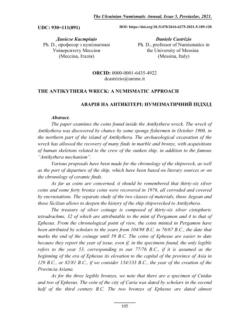

Authors:
A E Goncharov, D M Mednikov, N M Karelin, I R Nasyrov
The text aims to inform readers about the advancements
and applications of sonar technology in underwater
archaeology, specifically highlighting its use in detecting
and examining submerged archaeological objects without
the need for diving operations or expensive underwater
vehicles. It also aims to draw attention to the underexplored
potential of freshwater environments, particularly the Yenisei
River in central Siberia, for archaeological discoveries. It uses
the example of a 2016 expedition that located the wreck of
the 19th-century British steam schooner Thames to illustrate
these points..

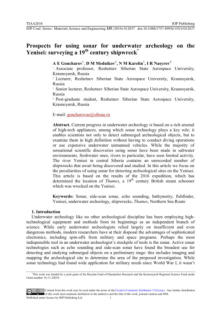

Author: Ian D. MacLeod
This document reports on the condition and preservation
efforts of the Australian First World War submarine HMAS
AE2, which is located in the Sea of Marmara. It describes the
environmental conditions at the wreck site, including salinity
and oxygen levels, the state of the vessel's concretion and
silt coverage, and the results of various analyses and
experiments conducted to understand the impact of the
environment on the submarine. Additionally, it outlines the
conservation measures taken, such as the use of zinc
anodes, to preserve the historic submarine in situ.



Authors:
Aksel Alstad Mogstad, Øyvind Ødegård, Stein Melvær
Nornes, Martin Ludvigsen, Geir Johnsen, Asgeir J. Sørensen,
& Jørgen Berge
This study was conducted on the wreck site of the Figaro, a
floating whalery that sank in 1908 and was discovered in
Trygghamna, Isfjorden, Svalbard. Multiple remote sensing
techniques have been used to survey and analyze the
wreck site, emphasizing the advantages of using
complementary methods such as photogrammetric 3D
modeling and underwater hyperspectral imagery. The
study also highlights the findings related to biofouling levels
on different marine archaeological substrates and suggests
that high-density biological assemblages could help identify
human-made artifacts on the seafloor.

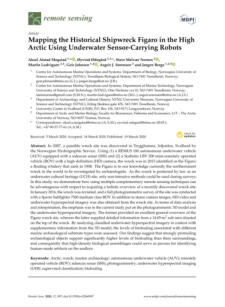

Author: Artur Grzadziel
This study focused on identifying a massive shipwreck in the
Baltic Sea using remote sensing technology, specifically side-
scan sonar and scanning sonar. The methodology,
challenges, and results of the study are described in the
report, emphasizing the effectiveness of the proposed
approach in obtaining accurate measurement data and
identifying the shipwreck with high confidence..



Authors:
(Maria Geraga, Dimitris Christodoulou, Dimitrios Eleftherakis,
George Papatheodorou, Elias Fakiris, Xenophon Dimas,
Nikos Georgiou, Stavroula Kordella, Michalis Prevenios,
Margarita Iatrou, Despina Zoura, Sofia Kekebanou, Makis
Sotiropoulos, and George Ferentinos
This document highlights the significance of underwater
cultural heritage (UCH) sites, particularly shipwrecks in the
Inner Ionian Sea in Greece, and emphasizes the need for a
protection framework to preserve these sites. It discusses the
methods used to study these shipwrecks, their historical
importance, and the threats posed by human activities such
as fishing.



Author:
I A Kirichenko, I B Starchenko, V Y Vishnevezkiy, A I Markolia,
I I Sizov , & T P Strochan
This document presents studies on optimizing the
characteristics of an acoustic profiler with a parametric
transmitting array for applications in underwater
archaeology and the monitoring of underwater
engineering objects. It discusses the influence of real
conditions on the performance of parametric hydro-acoustic
systems, the necessary amplification range to compensate
for acoustic wave propagation losses, and the required
acoustic power for effective penetration into marine
sediments. It also suggests designing and constructing a
parametric profiler based on these theoretical investigations.

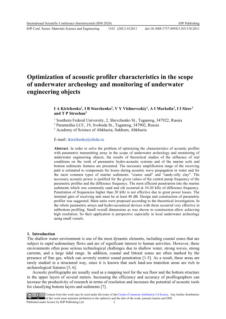

Author: Joanne Edney, Kay Dimmock, and William E. Boyd
The text intends to convey the importance of
understanding wreck divers' characteristics, motivations, and
attitudes to manage underwater wreck sites effectively. The
text emphasizes the need to balance heritage conservation
and tourism to ensure quality diving experiences while
protecting underwater cultural heritage. It also highlights
the outcomes of an international survey of wreck divers,
which can inform management strategies and destination
marketing..



Author: Joanne Edney, Kay Dimmock, & William E. Boyd
This study aims to understand the behavior of wreck divers
at underwater heritage sites. The study highlights the
limitations of conventional observation methods and
proposes the use of wearable cameras for video observation
to gain more detailed insights into diver behavior. The
findings from the video analysis are intended to inform
heritage and tourism management decisions and provide a
baseline for future research.



Author:
Carlota Pérez-Reverte Mañas, Felipe Cerezo Andreo, Pablo
López Osorio, Raúl González Gallero, Luis Mariscal Rico, &
Alicia Arévalo González
This document aims to inform about the positive economic
impact of public access to underwater and maritime cultural
heritage (UCH and MCH) and present the advancements
made by the University of Cadiz in enhancing this heritage
through new technologies. The text highlights the work
done within the TIDE and Herakles Projects, including
developing tourism activities such as accessible underwater
heritage routes, virtual reality applications for dry dive
experiences, and streaming of underwater archaeological
works.



Authors:
Charles Lawson, Dr. Stephen Lubkemann, Justine Benanty,
John Bright, Daniel M. Brown, Joshua Marano, Sean H. Reid,
Madeline Roth, & Tara Van Niekerk
This document is a detailed report on the archeological
activities, findings, and challenges associated with the
English China Wreck site (BISC-2) in Biscayne National Park
(Florida, USA). It documents the historical significance of the
site, the ongoing issues with looting, and the measures
taken by the National Park Service (NPS) to protect and
preserve the site. It also outlines the research conducted, the
results obtained, and the future plans for the site, including
the decision to bury it to prevent further damage.

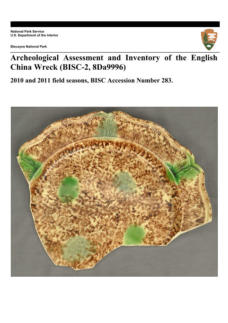

The French law "Arrêté du 21 Avril 2016" is designed to
regulate the procedures for hyperbaric activities within the
context of underwater and subaquatic archaeology. Its
purpose is to ensure such activities' safety and proper
management, providing a legal framework that addresses
the unique challenges and risks associated with underwater
archaeological work.
This document is published only in French.



Author: Giorgio Caramanna, Jouni Leinikki
This presentation intends to inform the reader about full-
face masks used in diving. It explains the benefits, features,
and applications of these masks, such as enhanced
protection, thermal insulation, and communication
capabilities. It also highlights the importance of proper
training and knowledge for safe use and mentions the
availability of different models.



Authors: National Park Service, National Oceanic and
Atmospheric Administration, Divers Alert Network,
American Academy of Underwater Science
The Rebreathers and Scientific Diving workshop aimed to
improve communication between agencies and create a
template for the scientific diving community. It included 18
hours of sessions over three days with additional interaction
time.
The recommendations were for the scientific diving
community and may not suit every situation. Therefore,
institutions have the final say on user authorization and
equipment. The discussed issues are significant but not
exhaustive, and the guidelines should be seen as ongoing,
requiring regular review.

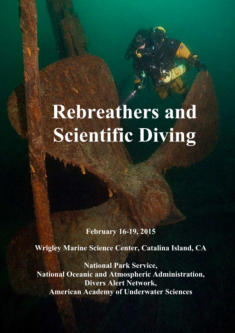

Author: Kim Kirsner
The article discusses the research on locating two World
War II shipwrecks: the German raider Kormoran and the
Australian light cruiser HMAS Sydney. It outlines the process
from inefficient predictions to accurate locations based on
survivor reports, with the Kormoran's wreck found just 2. 7
NM from its predicted position. It highlights cognitive
analysis and the challenges in distinguishing expertise
during the search for these wrecks. A key question
addresses the model of expertise and the complexities of
trans-disciplinary research.


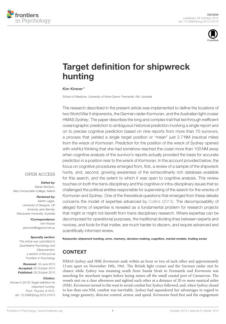

Author: Ian D. MacLeod
This paper discusses measurements taken on WWII
shipwrecks from Operation Hailstone in February 1944,
which affected the Japanese merchant fleet in Chuuk
lagoon. Over 65 shipwrecks and 250 aircraft were lost. The
study examines corrosion rates affected by water depth,
wreck topography, oxygen levels, temperature, and salinity.



Authors: Nikolaos P. Ventikos, Konstantinos Louzis,
Alexandros Koimtzoglou and Pantelis Delikanidis
The potential leakage of oil from shipwrecks is a rising
concern due to environmental risks and uncertainties. High
costs of preventing or responding to oil spills require risk
analysis to identify and prioritize the most dangerous
situations. This study aims to present a probabilistic risk
assessment method that accounts for uncertainties,
especially the corrosion of the shipwreck's steel structure
over time. The focus is on Greece, where numerous islands
make oil spill responses difficult and costly, potentially
harming local economies.



Author: Rachel L. Mugge, Melissa L. Brock, Jennifer L.
Salerno, Melanie Damour, Robert A. Church, Jason
S. Lee, and Leila J. Hamdan
Exposure to oil from the Deepwater Horizon spill may harm
the preservation of historic shipwrecks in the Gulf of Mexico.
Shipwrecks act as artificial reefs, supporting marine life. Oil
spills can disrupt the biofilms on these wrecks, which help
protect against corrosion. To study this, carbon steel disks
were placed at various shipwreck sites, and biofilms were
analyzed. Results showed that impacted sites had less
diverse biofilm communities and higher metal loss,
indicating that spill residues may harm these underwater
structures.



Authors: Kyra A. Price, Cody E. Garrison, Nathan Richards,
and Erin K. Field
Shipwrecks serve as artificial reefs and offer a surface for
various life forms, especially microbial communities. This
study focused on the Pappy Lane shipwreck to assess
microbial community differences. Samples showed
shipwreck microbes were more similar to each other than
to surrounding environments. Variations were noted in
microbial communities on corroded versus non-corroded
debris. Iron-oxidizing bacteria linked to deterioration were
abundant on corroded samples. A new strain was isolated
and found to potentially support nutrient cycling in the
ecosystem. Understanding these communities can aid in
shipwreck preservation efforts.



Authors:
Yeqing Han, Xinduo Huang, Yu Wang, Jing Du, Kaixuan
Ma, Yue Chen, Naisheng Li, Zhiguo Zhang, and Jiao Pan
The Nanhai No. 1 shipwreck is a Chinese merchant ship
from the Southern Song Dynasty, currently housed in a
glass warehouse at the Maritime Silk Road Museum in
Guangdong Province. The ship's hull is still being excavated,
and some wood is soaked in a solution for desalting. This
study analyzes the fungal community in both exposed and
soaked wood. We collected various samples and found
fungal structures using microscopes. The dominant fungi
were Fusarium sp. and Scedosporium sp. , with F. solani
and S. apiospermum posing a significant threat to
preservation. These findings help in the protection of
shipwrecks and similar artifacts













